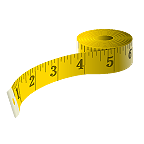Next Step in Ongoing Effort to Provide Marketplace Guidance Across a Range of Methodologies.
With the online advertising industry in need of more rigorous tools and systems for understanding campaign performance, the Interactive Advertising Bureau (IAB) has unveiled “Best Practices for Conducting Online Ad Effectiveness Research.” It provides online ad market stakeholders with a practical set of recommendations for standard operating procedures with respect to the use of ad effectiveness studies.
This new document is a follow-up to the groundbreaking 2010 IAB report “An Evaluation of Methods Used to Assess the Effectiveness of Advertising on the Internet” by Dr. Paul J. Lavrakas. That study examined the strengths and weaknesses of online ad effectiveness research methodologies.
The new report looks across the widely available methodologies to assess best practices in each phase of online ad effectiveness research and examines the challenges the industry faces within each phase, as originally outlined by Dr. Lavrakas, and proposes prescriptive remedies to each.
“Marketers are always looking to understand how their campaigns perform, and ad effectiveness research is one of the key tools in doing so,” said Sherrill Mane, Senior Vice President, Industry Services, IAB. “But there are still so many questions about the methodology itself that hamstring the validity of this research and undermine the industry as a whole. For our industry to continue to grow and realize its full potential, it is essential that we invest in the necessary advancements described by Dr. Lavrakas. In the interim, the ‘Best Practices’ document illuminates the planning, thresholds and decision parameters for working the existing tools.”
Some of the recommended IAB Best Practices for agencies and advertisers, as well as publishers, include:
Planning:
- To use online ad effectiveness surveys appropriately to make optimization decisions on an individual site, a study will optimally include at least 200 respondents.
- A 15-million impressions campaign should be the minimum before a site should consider running a study on behalf of advertisers, while a suggested “rule of thumb” is that the cost of an effectiveness study should be less than 10 percent of the overall buy.
- Agencies should include training and education for their media staffers not just on the mechanics and math of planning and buying, but also on the basics of research methodologies and implementation.
Recruitment:
- While the use of panels to recruit respondents may be an attractive alternative to live intercept recruitment, provided that the panels are validated, there are certain types of campaigns and circumstances that lend themselves more easily to the use of panels: high volume campaigns, multi-platform campaigns and customized ad placements.
- Publishers need to take some responsibility for declining response rates, and publishers should try to limit the frequency of survey invitations to protect the user experience and reduce clutter.
- Agencies and publishers should pressure vendors to undergo independent, third-party evaluations of their statistical methods and recruitment methodologies.
- Vendors should weigh results to actual campaign delivery, using third-party audience verification companies as a benchmark.
Deployment:
- All survey questions should be asked in an environment where the measured brand ads are not visible.
- Surveys aimed at business professionals should take less than 10 minutes to complete; four minutes or less is ideal and will improve completion rates.
- For consumer-targeted products, a longer survey may be possible, though advertisers should be wary of exceeding seven minutes; the “sweet spot” for survey length seems to be five to seven minutes, or approximately 20 to 25 questions.
Optimisation & Analysis:
- When feasible, marketers should marry their campaign effectiveness research to salient online and offline metrics to get a more comprehensive view of their advertising efficacy.
- Even as optimisation has been trending towards real time, brand marketers should be wary of making optimisation decisions based on real-time ad effectiveness data.





